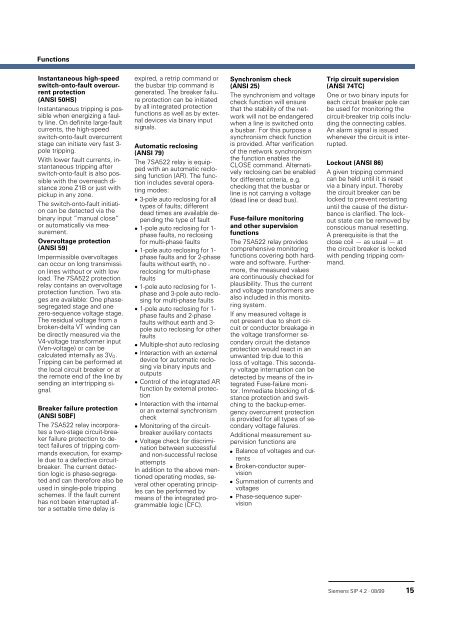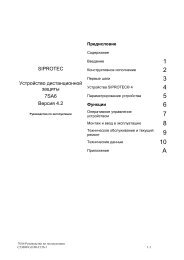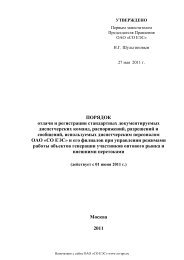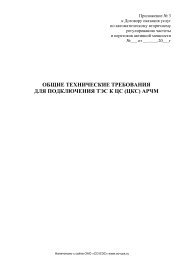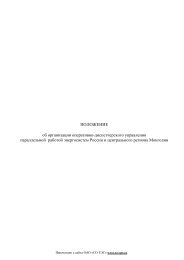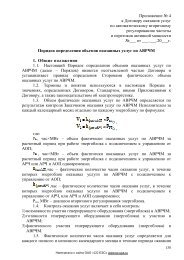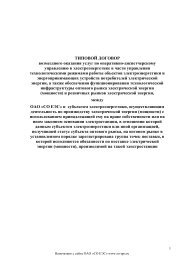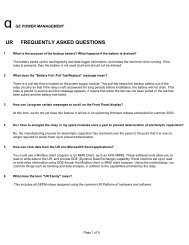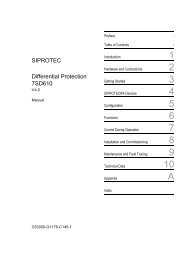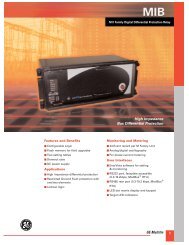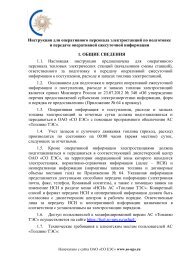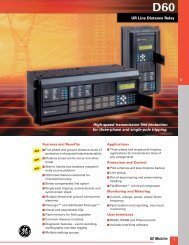SIPROTEC 4 7SA522 Distance Protection Relay for Transmission ...
SIPROTEC 4 7SA522 Distance Protection Relay for Transmission ...
SIPROTEC 4 7SA522 Distance Protection Relay for Transmission ...
You also want an ePaper? Increase the reach of your titles
YUMPU automatically turns print PDFs into web optimized ePapers that Google loves.
Functions<br />
Instantaneous high-speed<br />
switch-onto-fault overcurrent<br />
protection<br />
(ANSI 50HS)<br />
Instantaneous tripping is possible<br />
when energizing a faulty<br />
line. On definite large-fault<br />
currents, the high-speed<br />
switch-onto-fault overcurrent<br />
stage can initiate very fast 3-<br />
pole tripping.<br />
With lower fault currents, instantaneous<br />
tripping after<br />
switch-onto-fault is also possible<br />
with the overreach distance<br />
zone Z1B or just with<br />
pickup in any zone.<br />
The switch-onto-fault initiation<br />
can be detected via the<br />
binary input ”manual close”<br />
or automatically via measurement.<br />
Overvoltage protection<br />
(ANSI 59)<br />
Impermissible overvoltages<br />
can occur on long transmission<br />
lines without or with low<br />
load. The <strong>7SA522</strong> protection<br />
relay contains an overvoltage<br />
protection function. Two stages<br />
are available: One phasesegregated<br />
stage and one<br />
zero-sequence voltage stage.<br />
The residual voltage from a<br />
broken-delta VT winding can<br />
be directly measured via the<br />
V4-voltage trans<strong>for</strong>mer input<br />
(Ven-voltage) or can be<br />
calculated internally as 3V 0 .<br />
Tripping can be per<strong>for</strong>med at<br />
the local circuit breaker or at<br />
the remote end of the line by<br />
sending an intertripping signal.<br />
Breaker failure protection<br />
(ANSI 50BF)<br />
The <strong>7SA522</strong> relay incorporates<br />
a two-stage circuit-breaker<br />
failure protection to detect<br />
failures of tripping commands<br />
execution, <strong>for</strong> example<br />
due to a defective circuitbreaker.<br />
The current detection<br />
logic is phase-segregated<br />
and can there<strong>for</strong>e also be<br />
used in single-pole tripping<br />
schemes. If the fault current<br />
has not been interrupted after<br />
a settable time delay is<br />
expired, a retrip command or<br />
the busbar trip command is<br />
generated. The breaker failure<br />
protection can be initiated<br />
by all integrated protection<br />
functions as well as by external<br />
devices via binary input<br />
signals.<br />
Automatic reclosing<br />
(ANSI 79)<br />
The <strong>7SA522</strong> relay is equipped<br />
with an automatic reclosing<br />
function (AR). The function<br />
includes several operating<br />
modes:<br />
• 3-pole auto reclosing <strong>for</strong> all<br />
types of faults; different<br />
dead times are available depending<br />
the type of fault<br />
• 1-pole auto reclosing <strong>for</strong> 1-<br />
phase faults, no reclosing<br />
<strong>for</strong> multi-phase faults<br />
• 1-pole auto reclosing <strong>for</strong> 1-<br />
phase faults and <strong>for</strong> 2-phase<br />
faults without earth, no -<br />
reclosing <strong>for</strong> multi-phase<br />
faults<br />
• 1-pole auto reclosing <strong>for</strong> 1-<br />
phase and 3-pole auto reclosing<br />
<strong>for</strong> multi-phase faults<br />
• 1-pole auto reclosing <strong>for</strong> 1-<br />
phase faults and 2-phase<br />
faults without earth and 3-<br />
pole auto reclosing <strong>for</strong> other<br />
faults<br />
• Multiple-shot auto reclosing<br />
• Interaction with an external<br />
device <strong>for</strong> automatic reclosing<br />
via binary inputs and<br />
outputs<br />
• Control of the integrated AR<br />
function by external protection<br />
• Interaction with the internal<br />
or an external synchronism<br />
check<br />
• Monitoring of the circuitbreaker<br />
auxiliary contacts<br />
• Voltage check <strong>for</strong> discrimination<br />
between successful<br />
and non-successful reclose<br />
attempts<br />
In addition to the above mentioned<br />
operating modes, several<br />
other operating principles<br />
can be per<strong>for</strong>med by<br />
means of the integrated programmable<br />
logic (CFC).<br />
Synchronism check<br />
(ANSI 25)<br />
The synchronism and voltage<br />
check function will ensure<br />
that the stability of the network<br />
will not be endangered<br />
when a line is switched onto<br />
a busbar. For this purpose a<br />
synchronism check function<br />
is provided. After verification<br />
of the network synchronism<br />
the function enables the<br />
CLOSE command. Alternatively<br />
reclosing can be enabled<br />
<strong>for</strong> different criteria, e.g.<br />
checking that the busbar or<br />
line is not carrying a voltage<br />
(dead line or dead bus).<br />
Fuse-failure monitoring<br />
and other supervision<br />
functions<br />
The <strong>7SA522</strong> relay provides<br />
comprehensive monitoring<br />
functions covering both hardware<br />
and software. Furthermore,<br />
the measured values<br />
are continuously checked <strong>for</strong><br />
plausibility. Thus the current<br />
and voltage trans<strong>for</strong>mers are<br />
also included in this monitoring<br />
system.<br />
If any measured voltage is<br />
not present due to short circuit<br />
or conductor breakage in<br />
the voltage trans<strong>for</strong>mer secondary<br />
circuit the distance<br />
protection would react in an<br />
unwanted trip due to this<br />
loss of voltage. This secondary<br />
voltage interruption can be<br />
detected by means of the integrated<br />
Fuse-failure monitor.<br />
Immediate blocking of distance<br />
protection and switching<br />
to the backup-emergency<br />
overcurrent protection<br />
is provided <strong>for</strong> all types of secondary<br />
voltage failures.<br />
Additional measurement supervision<br />
functions are<br />
• Balance of voltages and currents<br />
• Broken-conductor supervision<br />
• Summation of currents and<br />
voltages<br />
• Phase-sequence supervision<br />
Trip circuit supervision<br />
(ANSI 74TC)<br />
One or two binary inputs <strong>for</strong><br />
each circuit breaker pole can<br />
be used <strong>for</strong> monitoring the<br />
circuit-breaker trip coils including<br />
the connecting cables.<br />
An alarm signal is issued<br />
whenever the circuit is interrupted.<br />
Lockout (ANSI 86)<br />
A given tripping command<br />
can be held until it is reset<br />
via a binary input. Thereby<br />
the circuit breaker can be<br />
locked to prevent restarting<br />
until the cause of the disturbance<br />
is clarified. The lockout<br />
state can be removed by<br />
conscious manual resetting.<br />
A prerequisite is that the<br />
close coil — as usual — at<br />
the circuit breaker is locked<br />
with pending tripping command.<br />
Siemens SIP 4.2 · 08/99 15


